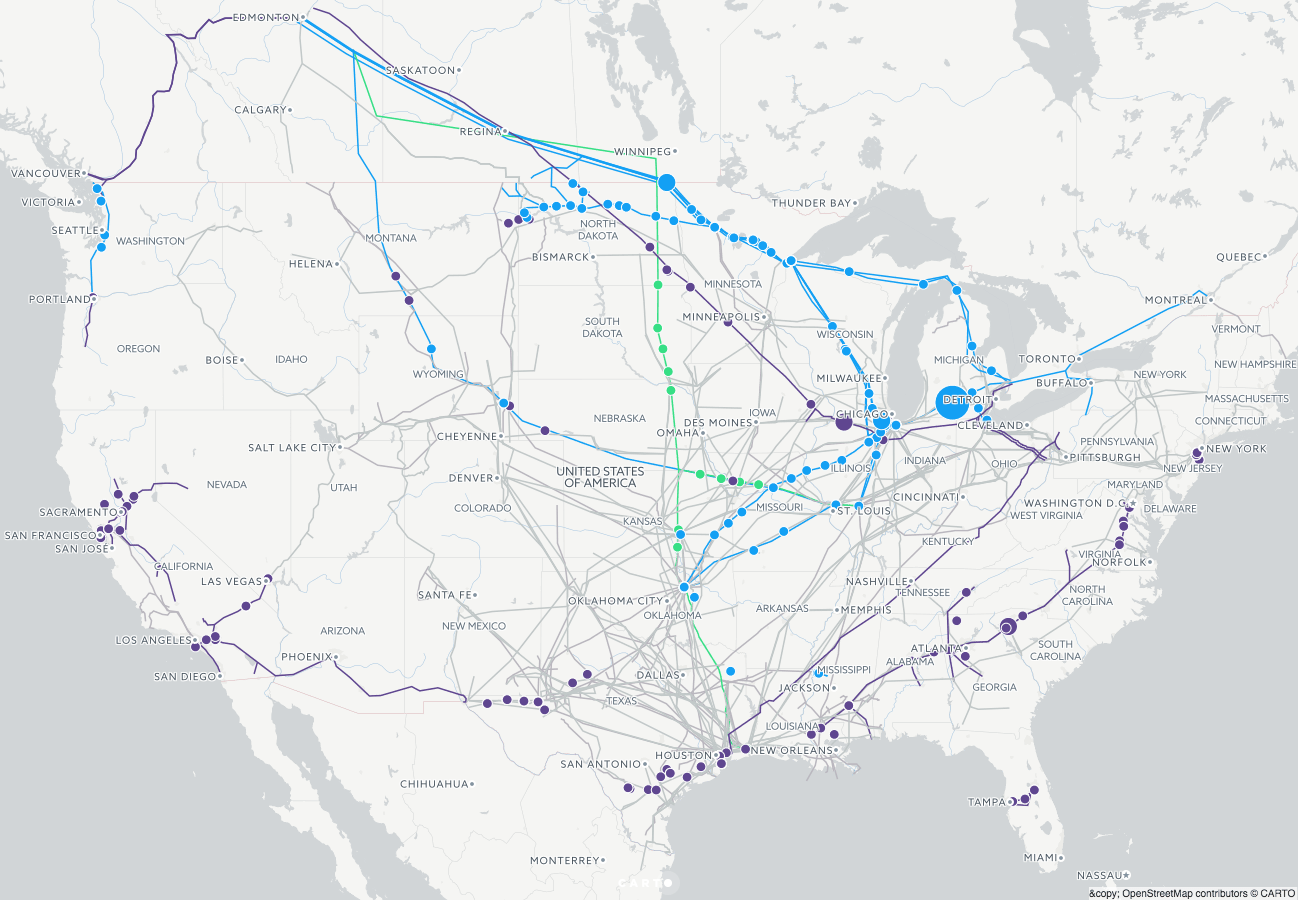For Immediate Release
August 3, 2017
Greenpeace Report Shows Risk of Spills from Proposed Tar Sands Pipelines
Highlights spills from the companies behind Keystone XL and Line 3 Expansion
Today Greenpeace released a policy brief and accompanying map that demonstrate the persistent threat of spills from oil pipelines. The report and map show the location and size of the 373 spills produced by pipelines belonging to just three companies–Enbridge, Kinder Morgan, TransCanada– and their subsidiaries and joint ventures. The “Dirty Three” are all at varying stages of developing four controversial oil pipelines from Canada’s Tar Sands across the North American continent. The report’s coverage is limited to spills in the United States, where TransCanada is attempting to re-ignite its ambitions to build the Keystone XL pipeline, and where Enbridge is in the late stages of permitting for its Line 3 Expansion pipeline, which will travel over 1,000 miles, crossing North Dakota and Minnesota to its destination on Lake Superior in WIsconsin.
Some key findings:
- Despite industry claims, pipeline spills have remained a steady problem, with significant spills of crude oil and petroleum products increasing over the last several years. The companies’ 373 spills since 2010 account for a total of 63,221 barrels of hazardous liquids, including Enbridge’s 20,082 barrels of tar sands oil spilled into the Kalamazoo River.
- Extrapolating from current rates of incidents, Keystone XL can expect 59 significant spills in a 50-year lifetime and Line 3 Expansion can expect 51.
- The map shows that spills have been widespread in states and regions across the Dirty Three’s pipeline networks.
- Along with being far more carbon-intensive than conventional crude, diluted bitumen, the form of crude oil that is transported by pipelines, has been shown to be much harder to clean up when spilled in water. Both Line 3 Expansion and Keystone XL make multiple water crossings and run near key watersheds and wetland habitats.
Far from being necessary, the four proposed pipelines–Kinder Morgan’s TransMountain, TransCanada’s Keystone XL and Energy East, and Enbridge’s Line 3 Expansion– are efforts to expand production capacity from Alberta’s tar sands. The costs of these pipeline projects, all being fronted by banks like JPMorgan Chase, TD, Wells Fargo, and Citi, each run into multiple billions of dollars. Greenpeace USA and Greenpeace Canada are part of an international coalition of civil society and Indigenous organizations campaigning to urge financial institutions to pull their investments in tar sands pipelines and the Dirty Three because of the financial and reputational risks they pose.
Contact: Jason Schwartz, [email protected], +1-347-452-3752


